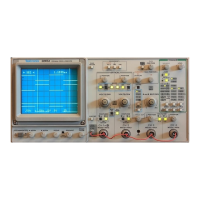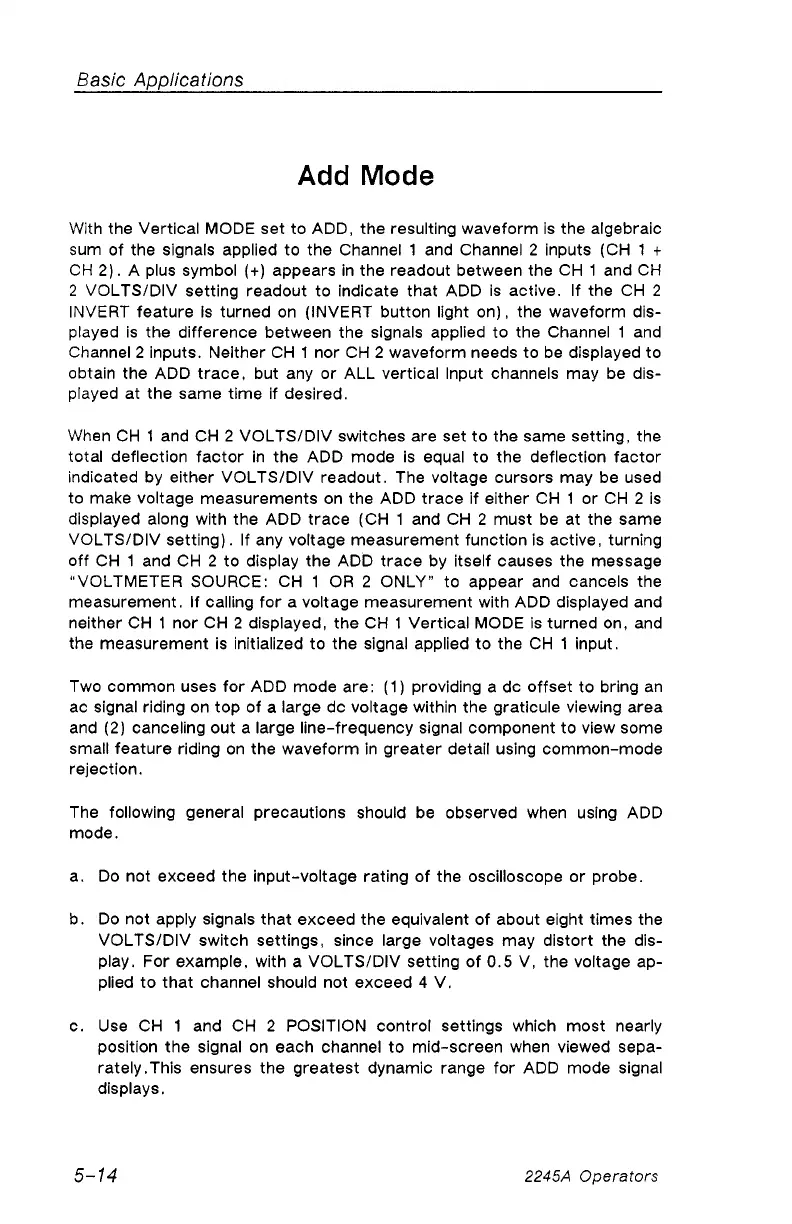Basic Applications
Add Mode
With the Vertical MODE set to ADD, the resulting waveform is the algebraic
sum of the signals applied to the Channel 1 and Channel 2 inputs (CH 1 +
CH 2). A plus symbol (+) appears in the readout between the CH 1 and CH
2 VOLTS/DIV setting readout to indicate that ADD is active. If the CH 2
INVERT feature Is turned on (INVERT button light on), the waveform dis
played is the difference between the signals applied to the Channel 1 and
Channel 2 inputs. Neither CH 1 nor CH 2 waveform needs to be displayed to
obtain the ADD trace, but any or ALL vertical Input channels may be dis
played at the same time if desired.
When CH 1 and CH 2 VOLTS/DIV switches are set to the same setting, the
total deflection factor in the ADD mode is equal to the deflection factor
indicated by either VOLTS/DIV readout. The voltage cursors may be used
to make voltage measurements on the ADD trace if either CH 1 or CH 2 is
displayed along with the ADD trace (CH 1 and CH 2 must be at the same
VOLTS/DIV setting). If any voltage measurement function is active, turning
off CH 1 and CH 2 to display the ADD trace by itself causes the message
“VOLTMETER SOURCE: CH 1 OR 2 ONLY” to appear and cancels the
measurement. If calling for a voltage measurement with ADD displayed and
neither CH 1 nor CH 2 displayed, the CH 1 Vertical MODE is turned on, and
the measurement is initialized to the signal applied to the CH 1 input.
Two common uses for ADD mode are: (1) providing a dc offset to bring an
ac signal riding on top of a large dc voltage within the graticule viewing area
and (2) canceling out a large line-frequency signal component to view some
small feature riding on the waveform in greater detail using common-mode
rejection.
The following general precautions should be observed when using ADD
mode.
a. Do not exceed the input-voltage rating of the oscilloscope or probe.
b. Do not apply signals that exceed the equivalent of about eight times the
VOLTS/DIV switch settings, since large voltages may distort the dis
play. For example, with a VOLTS/DIV setting of 0.5 V, the voltage ap
plied to that channel should not exceed 4 V.
c. Use CH 1 and CH 2 POSITION control settings which most nearly
position the signal on each channel to mid-screen when viewed sepa
rately. This ensures the greatest dynamic range for ADD mode signal
displays.
5-14
2245A Operators

